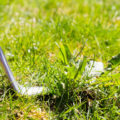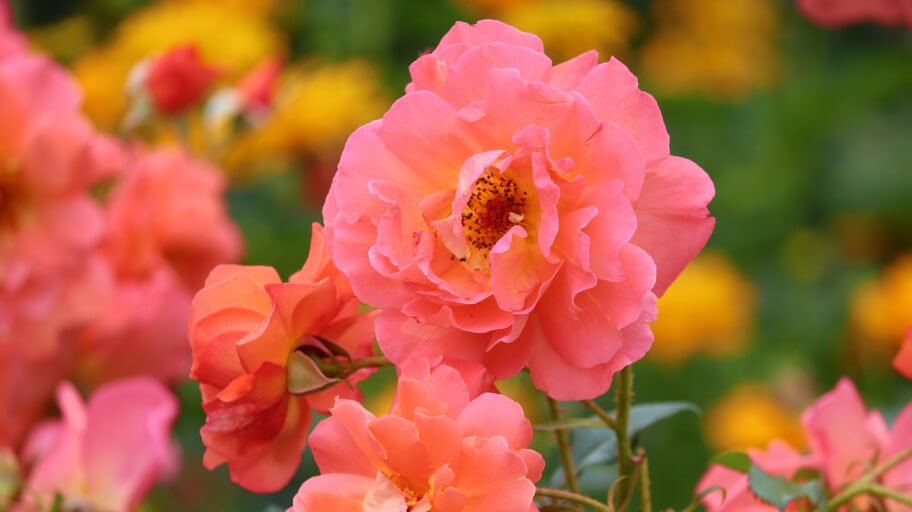
Cherries differ in tree species, sweetness, texture, taste and level of maturity. Growing them in your backyard isn’t easy. They need a cool climate, regular pruning, and proper maintenance. Knowing how to prune a cherry tree in Australia and anywhere else has many benefits. Shaping, survival, stimulating growth, easier harvesting, and increased yield are a few.
Here you will learn how to prune a cherry tree in Australia, where there are over 80 species of the sweet, sour, multi-graft, hybrid, and other varieties.
Different cherry species – choose the one for you
Sweet cherry trees
The sweet cherries include the species:
- Lapin – available from the middle of December to January, with a heart shape, dark red skin, and firm flesh in golden-red. Lapins are suitable for consuming fresh and preserved.
- Bing – has heart-shaped fruit, a pleasant flavour, and lustrous and dark red skin.
- Napoleon – has large fruit, light yellow skin with pink blush on it and a sweet flavour. Napoleon cherries are very productive, beautifully ornamented, and fruit in December.
- Stella – yields fruit from the middle of December, medium to large in size and heart-shaped. The flesh is dark red, firm, and very sweet.
- Sweetheart – a late variety developed in recent years. The fruit has a medium size and bright red skin with deep and sweet flesh.
- Van – medium to large in size, deep red skin and flesh, sweet and rich flavour. It can’t be stored for long and should be consumed immediately after buying.
Besides the above, there are many other sweet cherry species spread around Australia.
Sour cherry trees
The sour cherry trees include:
- Morello – this classic cherry variety comes in a small to medium size and has dark skin and flesh. It is commonly used in baking and pastries.
- Sam – has large fruit with black skin and red flesh. The flavour is mildly tart and rich. Sam cherry trees are available from mid to late December.
Hybrid cherries
Hybrid cherries are perfect for growing in smaller soil areas or in containers and pots, as many of them are semi-dwarfs. They reach a little over half the size of a full-sized adult cherry tree. Semi-dwarfs are often grafted on a dwarfing rootstock.
How to prune a cherry tree
Every gardener wants their trees to yield fruit abundantly and be healthy for years. This requires the proper knowledge and skills on how to prune a cherry tree and when to do it.
Cherry trees need pruning after the framework and regularly during growth. Sweet cherry trees reach up to 10m in height, with a 5-6m spread if left unpruned, while sour species are much smaller and bushier, reaching 4m in height. When kept in orchards, cherry trees are maintained significantly smaller.
What you will need:
- A hand pruner
- Long-handled lopping shears
- A pruning saw
- Sharpeners for the instruments
- Rubbing alcohol
- Bleach and water
- A stepladder
There are several ways to prune a cherry tree, like the Spanish bush method. The process involves:
- Sterilise and sharpen your pruning shears to avoid subjecting the tree to diseases. Make a bleach solution of 1 part bleach and 9 parts water. Dip, rinse the shears with hot water and dry them with a clean towel.
- Prune back 30 cm above the graft after you plant the tree or in the first summer. They will grow 4 to 6 leaders the following year.
- Prune back the leaders 30 cm above the previous year’s cutting point the next February.
- The following season, repeat step 2 to reduce the speed of growth. The tree will grow small with thin branches.
After following the above steps, in 3 years you should have 15 to 20 leaders, each with many fruiting spurs thanks to the cropping. The cherry tree will become smaller, easily netted and harvested.
How to prune a cherry tree sapling
Young cherry trees usually have 2 strong long branches that need to be cut to 500 mm in size, or a bit longer if planted while dormant. Here is how to prune a cherry tree sapling after sterilising and sharpening your tools:
- Head the tree at 60 to 75 cm at a 45-degree angle. Do this late in the winter or early spring, after planting and before the buds mature.
- Choose 3 or 4 scaffold or main branches after planting in the next winter dormant period. Select limbs and branches growing at a 45 to 60-degree angle, with a 15 to 22 cm distance between them. Prune all other limbs at the base where they connect to the trunk.
- Cut scaffold branches back to 60 cm to stimulate lateral or secondary branching in the summer. Cut at about half a centimetre above an outward bud at a sloping angle away from the bud.
- Keep 3 to 4 main branches each year at a distance of 45 to 60 cm under the previous scaffold whorl. Head the new primary branches back to 75 cm for rapid bud growth.
- Choose 2 healthy secondary branches per primary branch. Cut the others from the base. Head the rest of the secondary branches to 60 cm from their point of contact with the primaries to stimulate the growth of tertiary branches.
- Remove damaged and dead branches or waterspouts after the third season to let the tree grow fully and bear fruit.
Now that you know the basics of how to prune a cherry tree sapling, you can follow these steps.
How to prune a mature cherry tree
After the cherry tree becomes 3-year-old, prune its new vertical limbs with saws or loppers to stimulate outward growth.
To learn how to prune a mature cherry tree, follow these instructions:
- Clear diseased limbs and dead fruit. Reduce the length of any suckers, cutting them at the tree base. Remove crossed branches.
- Remove all discarded branches and remnants from your work. These can make the tree prone to disease.
- Protect the tree from disease and infections, decay organisms or insects. Cover all the cuts you have made with a tree sealant.
Dwarf cherry tree pruning tips
If you provide proper care for your dwarf cherry tree, it will give you plenty of fruit. Here are some helpful tips you can apply:
- Disinfect the garden loppers and pruning shears with rubbing alcohol to avoid the spread of disease and fungus across trees.
- Prune the lower extremities of the tree. Cut back the branches 7 to 10 cm until the tree becomes round and even.
- Prune higher and larger limbs with garden loppers at the upperparts and centre of the tree using a stepladder. Start with the lower extremities and move to the larger and higher limbs.
- Remove suckers (small shoots growing from the main trunk or around the tree base) from the tree base with pruning shears.
- Clear all clippings, since they can kill the grass and plants under them.
When to prune your cherry tree
The most appropriate time to prune cherry trees and dwarf ones is in the late winter when they are dormant. Avoid doing this in the summer. Dormant pruning is an aggressive procedure. Sweet cherries, however, are more prone to bacterial and fungal infections in the winter. You should prune them minimally in the late summer using thinning cuts. Young cherry trees are best shaped in the early spring before they blossom.
Takeaways
- Cherry trees (that aren’t sweet species) should be pruned late in the winter when dormant.
- Sterilise and sharpen your tools before every use on each new tree.
- Young cherry trees need to be pruned in an open, vase-like shape to let light and air reach them. When done properly, the trees bloom and fruit more abundantly.
- Once you establish the framework branches, the trees need scarce pruning. Remove broken and obstructing branches.
- Dwarf cherry trees should be cut in a round shape. Their branches need to be perpendicular to the main trunk if possible.
Tree pruning is too much work?
A reliable Fantastic gardener can take care of your trees!








